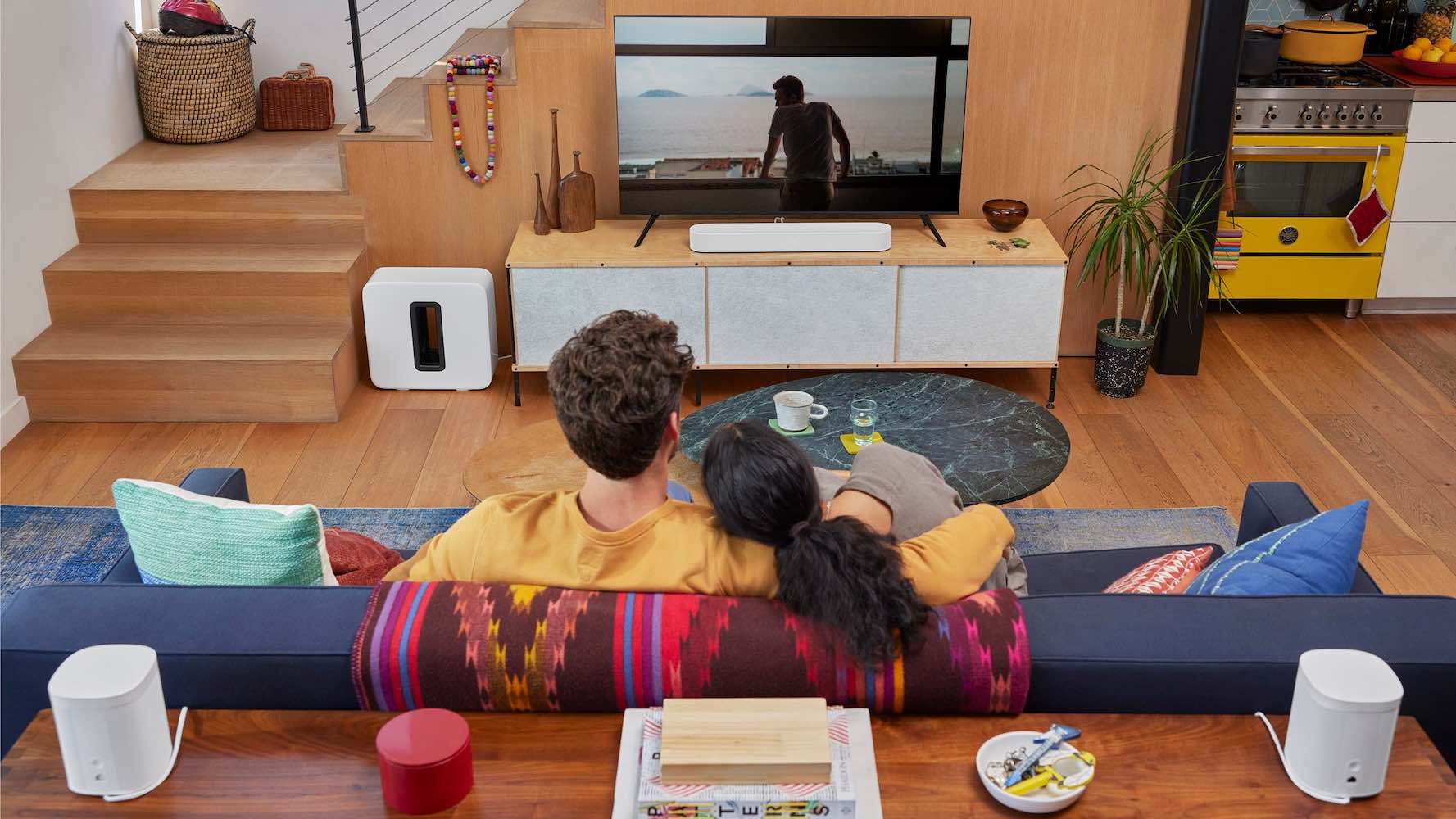
Every speaker brand has its own strengths, and we all tend to have a favourite brand. When choosing multiple devices for a home theatre, most people stick to their favourite brand, but some find that incorporating multiple brands or models of speakers allows you to create a custom setup you can’t get with an out-of-the-box system. Should you mix and match home theatre speakers or should you choose an already matched set of speakers and sound bar?
What are home theatre speakers?
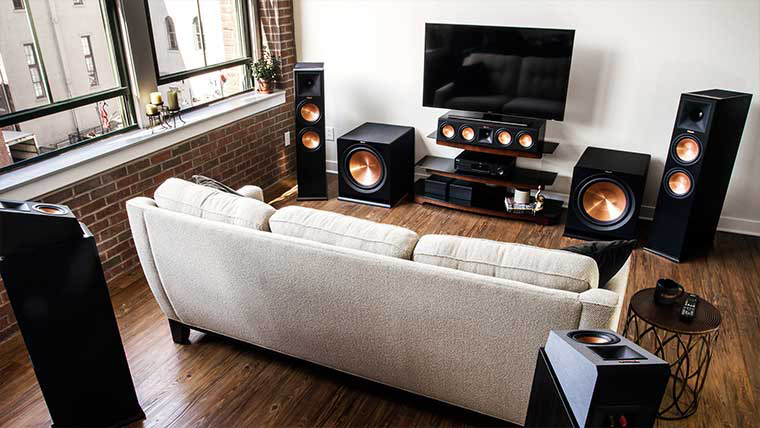
Before getting into specific brands and device types, it’s important to know what exactly a ‘home theatre speaker’ is. By definition, a home theatre speaker is any speaker you can pair with your TV to reproduce the experience of being in a movie theatre. These speakers help create a captivating audio and visual experience from the comfort of your own home.
Home theatre speakers are often larger and stationary, but you can also find models that are compact and portable. Some are difficult to move around because they are tall, bulky, and wired to your TV or receiver, while others are Bluetooth devices so you can take theatre-level audio with you on the go. If you want to take a look at the benefits of portable theatre-quality speakers, I’d suggest reading through the article How to use multiple Bluetooth speakers for amazing sound.
What does it mean to mix and match home theatre speakers?
When it comes to home theatre speakers, you can definitely mix and match brands if you’d like to. By mixing and matching I mean you are using different brands or different types of speakers to create a custom home theatre system. The only catch is that there are two types of home theatres – receiver-based home theatres and sound bar home theatres. In general, mixing and matching home theatre speakers is only possible with receiver-based systems.
While the short answer is yes, you can mix speakers in your receiver-based home theatre, the most common choice people make is to stick with one brand or one specific line of speakers. This is especially true for any of your main front-facing speakers.
Having two different brands or models of speakers may cause inconsistencies in your audio. Those inconsistencies can show up in left, right, and center speakers in a surround sound set up as the audio moves from one side of the screen to the other. If you use the same brand of speakers and they are all smart speakers, it’s easy to pair them together using the brand’s app. If you had different speakers, you might have to use different apps to control them or they may not pair together properly.
Pros and cons of mixing and matching speaker brands
For reference, here is a quick list of pros and cons of mixing and matching your home theatre speakers. I’ll go over a few of these points in detail.
Cons of mixing home theatre speaker
- Researching compatibility options is necessary and can be time-consuming
- Some brands have software that makes them hard to match and pair
- If they do sync and pairing is done incorrectly, you may have inconsistent audio output
Pros of mixing home theatre speakers
- Freedom to choose which speaker you’d like to invest more in
- Mixing devices can let you draw out the best qualities of each respective brand as they vary with power, output, and features
- It can save you from having to buy new speakers if you already own some you’d like to keep using
When should you mix and match your speakers?
There are ways to incorporate different speaker brands in your setup. To start, you may find the simplest speaker to mix and match with is a subwoofer.
1. When you just want to add on a subwoofer
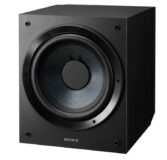 Subwoofers are specifically made to achieve the low-frequency tones in your audio that normal speakers are unable to produce. Unfortunately, in my experience, some brands treat subwoofers as an afterthought for their speaker pairs. This makes it a lot easier to buy the subwoofer you’d like from your brand of choice.
Subwoofers are specifically made to achieve the low-frequency tones in your audio that normal speakers are unable to produce. Unfortunately, in my experience, some brands treat subwoofers as an afterthought for their speaker pairs. This makes it a lot easier to buy the subwoofer you’d like from your brand of choice.
Subwoofers are easy to set up when it comes to mixing and matching in your home theatre. Most devices have plenty of compatible ports and cables that plug straight into your pre-existing speaker setup. Wired subwoofers should easily pair with any type of receiver or subwoofer that allows wired connections.
Some types of subwoofers are wireless and connect via Bluetooth, and you’ll want to do a bit of research on compatibility before buying one for your home theatre. If you set up the system via a remote control or an app, you’ll want to make sure the app will recognize and sync with all types of Bluetooth devices. You’ll also want to be sure you are careful not to overpower your setup with a huge device if the rest of your speakers or your receiver isn’t as powerful. You can take a look at the receiver buying guide for more on wattage and how to choose a receiver.
2. When you don’t mind researching different speakers
When mixing your bookshelf, tower, or ceiling speakers with a receiver, the easiest option is to match with the same brand. If you have speakers at home right now and you’d like to use them with a newly purchased receiver, you’ll want to make sure they will connect without any issues. You’ll want to spend some time researching compatibility and ensure your system will work together without issues. Here are a few things you can check for.
- If the speakers are wired, you’ll want to ensure your receiver has a spot to plug them in.
- If the speakers are Bluetooth or Wi-Fi, you’ll want to check your receiver app to ensure the devices can be paired to the receiver.
Can you add extra speakers to a sound bar?
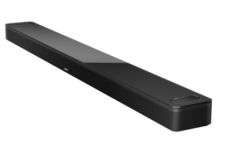
A sound bar is a stand alone home theatre system. It replaces a traditional receiver and speaker home theatre set up. You can choose sound bars that are packaged with a set of bookshelf speakers and a subwoofer, but in general, you won’t need to add extra speakers to a sound bar because it has everything built into the sound bar itself.
The only simple scenario where you can add speakers to a sound bar is when the speakers are wireless and designed to pair natively with the make and model of your sound bar. This type of speaker pair is called a ‘rear speaker kit’ and these kits will only pair with select types of sound bars.
Wired speaker connections are generally not an option for sound bars. The reason why you can’t wire speakers right to your sound bar is because sound bars aren’t built with extra ports for a wired connection to your existing speakers. It’s also not recommended that you pair a sound bar with a receiver.
What if the speakers or subwoofer that came with your sound bar are broken and you need to replace them? You’ll likely need to replace your subwoofer with the exact same subwoofer that came with your sound bar as they are designed to connect to each other.
Compatibility is key before you shop
While I’ve briefly gone over how it’s possible to mix and match different home theatre speakers, in practice this type of setup can have a lot of complications. This is especially true if you’re choosing Bluetooth speakers as each brand may utilize its own software that can limit device connections.
Even if you are able to connect the devices manually by adding them to your phone or TV via individual Bluetooth connections, you may be required to control them via individual apps and that can be more hassle than it’s worth. That may soon be changing now that Matter is being developed.
Matter will ease compatibility issues
Luckily for us, smart home brands are taking note of this compatibility issue by supporting upcoming technology like Matter. Matter is a universal language that all devices will use to communicate with each other. It will allow you to connect multiple different smart devices and control them in a single app much like a media streamer connects different streaming platforms in one device. Google Nest has added it to its devices and Samsung announced at CES that Matter will be built into theirs. Soon all smart home devices will support it.
While there’s no way yet to be sure how it will be used for smart speakers, it’s a good sign that mixing and matching speaker brands may soon be a lot easier.
Best speaker brands for your home theatre
We’ve gone over some of the pros and cons of mixing and matching your home theatre speakers. Personally, I believe one of the benefits of mixing and matching brands is being able to choose where more of your budget goes into your home theatre. As a fan of movies with visceral explosive action, I always want to invest more in high-quality subwoofers and pair extra height and tower speakers with a dynamic receiver.
If you need recommendations of speakers you can choose as a set or individually, I’ve gathered a few of my top recommendations to incorporate into your home theatre.
- Bose – one of the most known brands when it comes to quality audio. They offer an excellent selection of reliable speakers
- Sonos – is another solid option for any of your home theatres. They have just released a new 3rd Gen Sub. It offers incredibly rich bass and is easy to install in most cases
- Polk – better known for their impressive subwoofers, the Audio SR2 surround sound speakers are a great choice for an immersive audio experience. They also have a classical design that doesn’t intrude on your living space
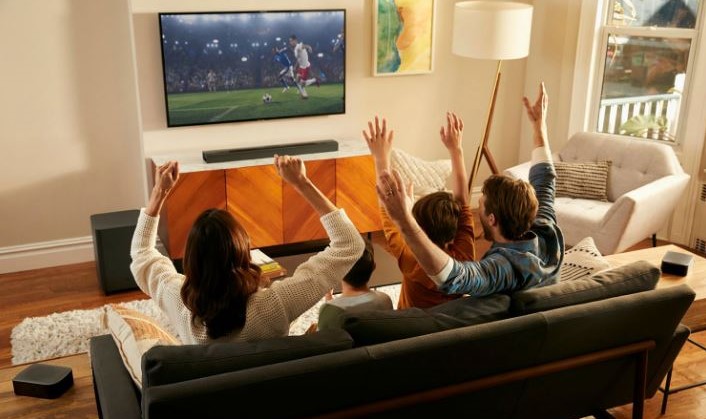
Final thoughts on mixing home theatre speakers
After doing the research, mixing your home theatre speakers may not be the best choice for your situation. You’ll find choosing a device that is made with compatibility in mind will save you a lot of hassle, and I think subwoofers are the easiest to add to every type of receiver-based system. Personally, I’m going to stick with the same brand when I add new speakers to my home theatre, but I do plan on getting a more powerful subwoofer in the future and I’ll probably cross brands for that. If you’d like to read more about home theatre setups, take a look at the home theatre speaker buying guide.
Do you plan on mixing and matching your speakers? Whether you do or don’t, I’m curious to hear why or about any experiences you’ve had doing so in the comments below. If you’re looking for new speakers, a sound bar, or a home theatre kit, you can find everything you’ll need at Best Buy.

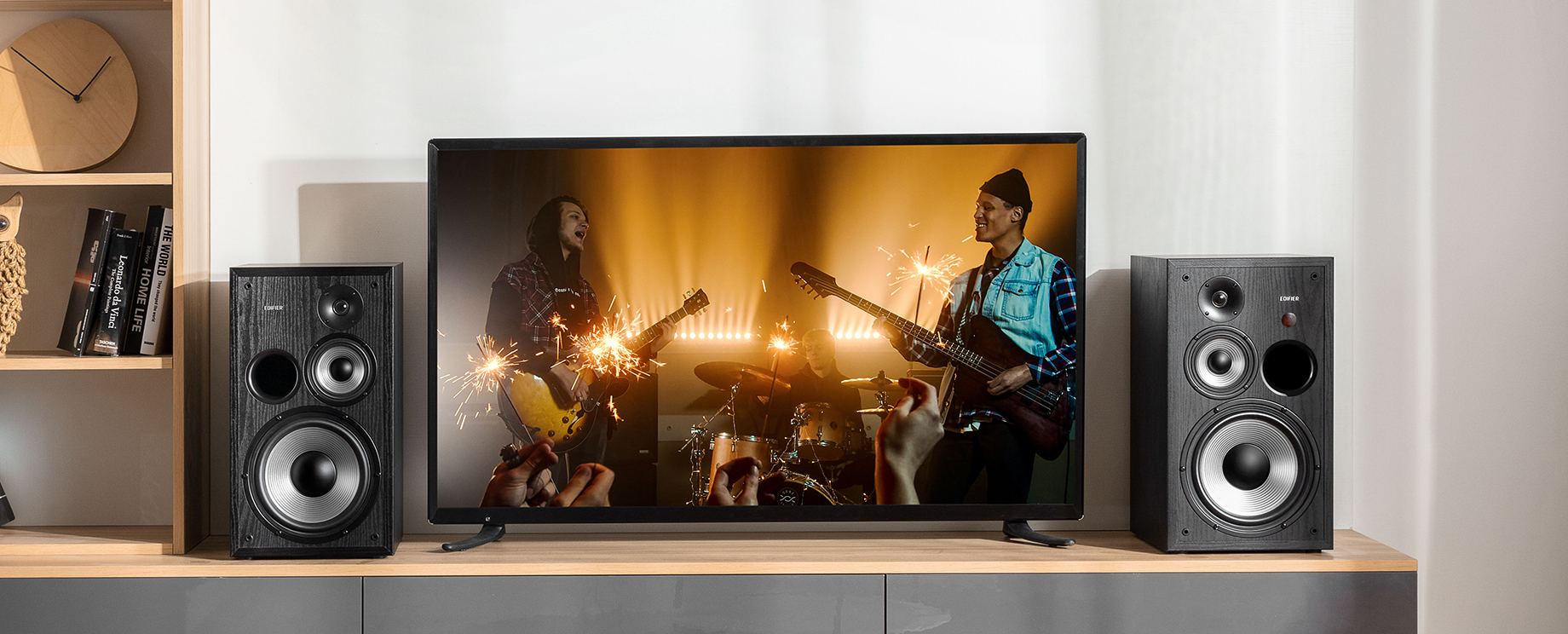



Mixing and matching speakers for a home theater system, is generally not a good idea when it comes to sound and especially tonal accuracy. Although speakers can be mixed, there are some guidelines to help in maintaining important tonal and dispersion accuracy. First rule is that the tweeters must all be the same type, and secondly, ideally same brand. Failure to follow this will result in changed vocal tones, and diffused stereo and surround imaging and staging. As for subwoofers, many make the common mistake of getting a large diameter subwoofer, to add to either a soundbar or bookshelf speaker system, and even some tower speakers. This tends to create a “tonal hole” in mid-bass, low-bass and sub bass, which needs constant readjusting. Keep in mind when choosing a subwoofer, to match the size of the largest woofer in your speaker system, and have a slightly larger sized subwoofer with as much power as possible so if your tower speakers use up to a 6″ woofer, I would recommend using a single 8″ subwoofer,
like the Bowers and Wilkins https://www.bestbuy.ca/en-ca/product/bowers-wilkins-asw608-8-200-watt-powered-subwoofer-black/13985275 . I’m somewhat surprised that this premium brand was not mentioned. For larger rooms, a second 8″ subwoofer will add fuller body nicely, as the pair will physically push more air than a single 10″ and do it quicker for better impact..Alternately where space or décor is an issue, a single 8″ subwoofer with more power and even built in passive bass radiators will do better than some 10’s.
Comments are closed.